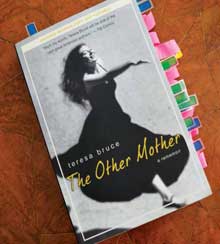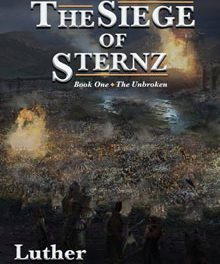 ‘The Other Mother: a rememoir’ by Teresa Bruce, 2013, Joggling Board Press
‘The Other Mother: a rememoir’ by Teresa Bruce, 2013, Joggling Board Press
Review by Margaret Evans, Editor
On the cover of her new book The Other Mother, Pat Conroy writes, “Mark my words, Teresa Bruce will be one of the next great American authors.”
The admiration is mutual. In her acknowledgments, Bruce thanks Conroy, calling him “my literary inspiration.”
The two were in a local writers’ group together for years, and while their voices are undeniably distinct, there’s a philosophical lyricism running through The Other Mother – passages of lush, evocative prose, rich in subtext – that might put you in mind of vintage Conroy.
“I had lived among the tidal rivers of Beaufort long enough to know that falling overboard does not have to end in drowning. There is a natural buoyancy to brackish water that its dark, opaque depths do not reveal at first. Rafts of dead marsh grass give it away. They always float in the direction of the flowing tide, and there are twisted miles to go before the rivers open to the ocean sound and surrender to the Gulf Stream. Twice a day the waters reverse course and flood the marshy inlets once again. All that is lost returns…”
Bruce made up a new word – “rememoir” – to describe her book, which is part memoir, part… bio-fantasy? (I made up that word.) But it reads like a novel . . . in the very best sense. Unlike many books that call themselves ‘memoir,’ this one has a plot – two interweaving plots, really. And one of them is a love story of such epic proportions – between two people for whom the expression “larger than life” was surely invented – that you’ll think you must be reading a work of fiction. Romeo and Juliet? Cathy and Heathcliff? Scarlett and Rhett? They’ve got nothing on Byrne and Duncan Miller. The dazzling, rule-breaking dancer from New York and the charming, mysterious writer from Charleston: Bruce draws these real life “characters” with tenderness and affection, but never glosses over their darker dimensions. They were unconventional people in an unconventional marriage, but according to this telling, it was a love affair for the ages.
Dance is the The Other Mother’s central motif, and there is some subtle but artful choreography at work here. This is a book written by a dancer about a dancer, and its very structure is a sort of a slow-building pas de deux. The “partners” are Byrne’s story (a re-imagining of her life based on letters, journals, articles, conversations, and the author’s memory), which is told in the third person, and Teresa Bruce’s own story, told in the first. Byrne’s story begins in 1920s New York, while Teresa’s starts in Mexico, late ’80s. Eventually, the two stories entwine – and Beaufort becomes their stage – but the word “eventually” is misleading, because the narrative is not linear; it leaps back and forth through time. Don’t let that scare you, though. The movement is graceful, easy to follow. This is not one of those slim, self-important volumes that aim to impress with stylistic edginess at the expense of a good story.
In fact, at just over 400 pages, The Other Mother is a hefty, satisfying feast of a book . . . the kind you want to hunker down with on a cozy afternoon or three. While Bruce has created some unforgettable, near-mythic characters in Byrne and Duncan Miller – those grand, adventurous bohemians – she has also written bravely and honestly about her own early years in Beaufort, as a young TV reporter with a troubled past and a dark secret. Through her friendship with the unorthodox, indomitable Byrne, the young Teresa found the strength to face her painful history, shed her secret and recreate her life on her own terms . . . and now, two decades later, she shares her metamorphosis with all the courage and truthfulness that great literature requires. The fact that she wraps this harrowing tale in some of the most elegant prose you’re likely to come across is no accident. Once an aspiring Olympic gymnast, then a serious ballet dancer, Bruce has now turned her fierce discipline and focus on the writer’s craft, and to marvelous effect.
Local readers will enjoy recognizing places and people – maybe even themselves! – while savoring Bruce’s delicious descriptions of Beaufort and the surrounding environs. Still, this is a book with universal appeal; the interior of a tiny New York apartment springs to life on the page just as vividly as a moss-shadowed Lowcountry landscape.
But it is the delicate landscape of the human heart that Teresa Bruce most perfectly and poignantly depicts, in colors so surprising, yet so deeply familiar, that it feels like revelation.
Read our Two Part Interview with Teresa Bruce starting here.







